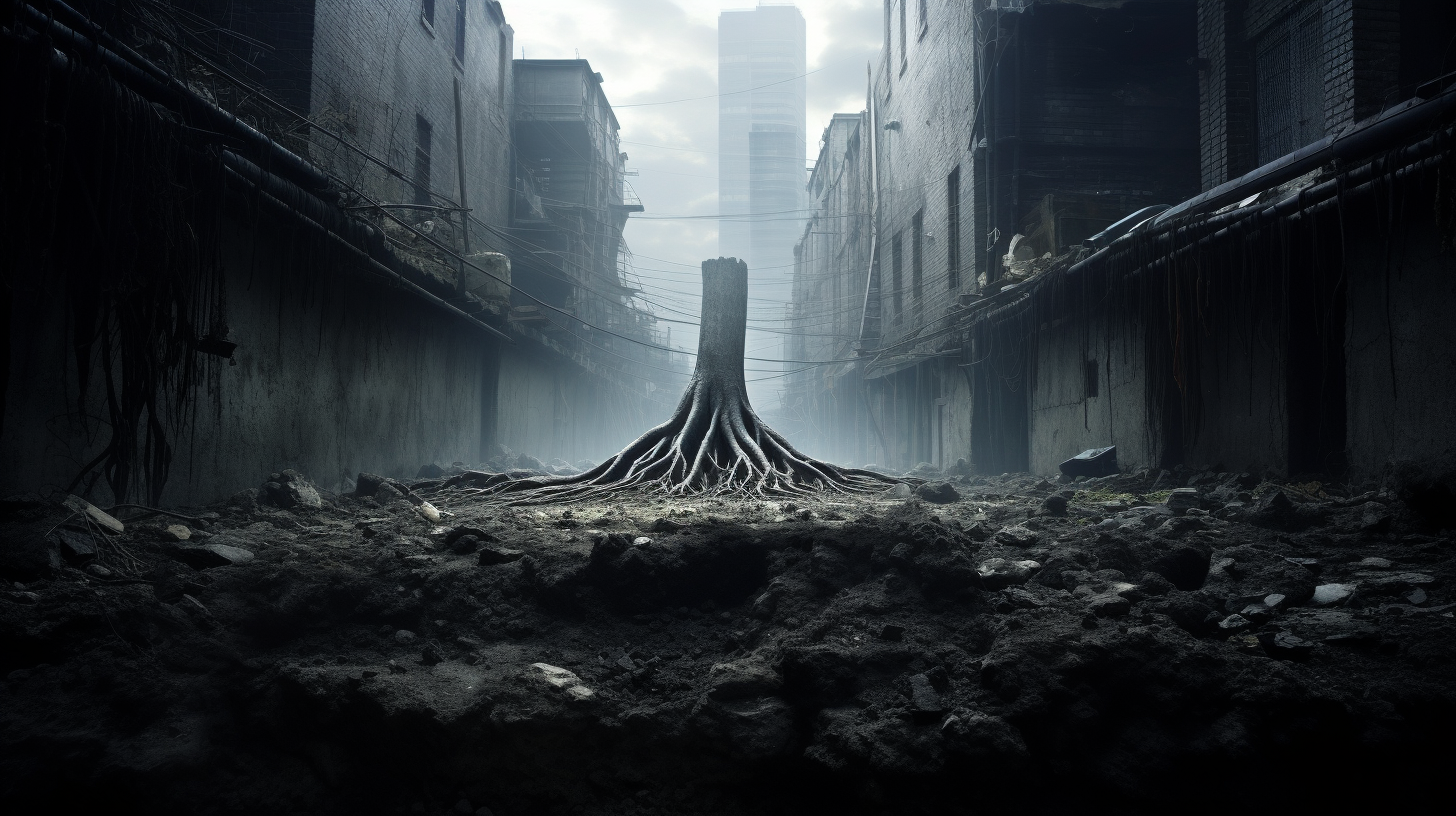In the sprawling shadows of a world brought low by environmental debacle, where the vestiges of once-vibrant ecologies languish under layers of neglect, another narrative quietly unfolds beneath our feet. This is not the tale of the mighty or the conspicuous, but rather, the story of silent, resilient intelligence – the hidden acumen of plant life. ‘Deep Roots – Plant Intelligence Redefines Survival’ casts a pallid light on the fascinating and obscure strategies that flora employ in their inexorable quest to endure in the dystopian landscape we now inhabit. Through the lens of plant neurobiology, we glean a beguiling paradox; as humanity stumbles, the botanical world whispers a chorus of survival wisdom.
The stark reality of climate calamity and human mismanagement has pillaged fertile lands, turning them into inhospitable deserts; oceans, once teeming with life, are now acidified crypts. Yet, remarkable adaptations are at play in the overlooked corners of this grim tableau. Research on plant cognition has revealed that our green companions, devoid of a central nervous system, are nonetheless masters of communication and decision-making. They share resources via the Wood Wide Web, an interlinked network of mycorrhizal fungi that facilitates not just nourishment, but also critical information regarding pests, drought, and salinity.
Dendritic growth, a phenomenon once solely attributed to neural networks, is found in plant roots. It echoes the adaptability and learning patterns we revere in the animal kingdom. By delving into these sinuous roots, scientists unlock secrets that could redefine what we conceive as intelligence. Plants demonstrate an uncanny capacity for memory, utilizing biochemistry to retain information about their environmental experiences and leveraging it for survival – a fascinating spectacle of biological prowess in a world otherwise marred by decline.
As our concrete jungles sprawl and merge, we witness plants that exploit the new dystopian terrain by capitalizing on the decaying vestiges of human civilization. Industrial ruins become havens for peculiar species that harness toxic metals and pollutants, not merely to thrive but also, astonishingly, to cleanse their newfound habitats. These verdant warriors are nature’s uncelebrated cleanup crew, reclaiming territory in a silent but pivotal insurgency against environmental abuse.
In its degenerative twilight, we find lessons on longevity within the humble leaf and root. What if human hubris has blinded us to the possibilities of collaborating with these cerebral vegetations? Could they teach us to glean sustenance from debris, to forge alliances with mycelium, or to establish data highways beneath soil already turned barren?
The article draws a harrowing yet enthralling contrast between our advanced technologies crumbling under their ambition and Earth’s vegetation, charting an unassuming path of sophisticated adaptation in hostile environments. Whether we regard them as passive elements of scenery or discern their cryptic dialogues, plants are unwavering in their esoteric quest to survive and might, perhaps, harbor keys to our own persistence – if only we’d heed their inaudible counsel.
